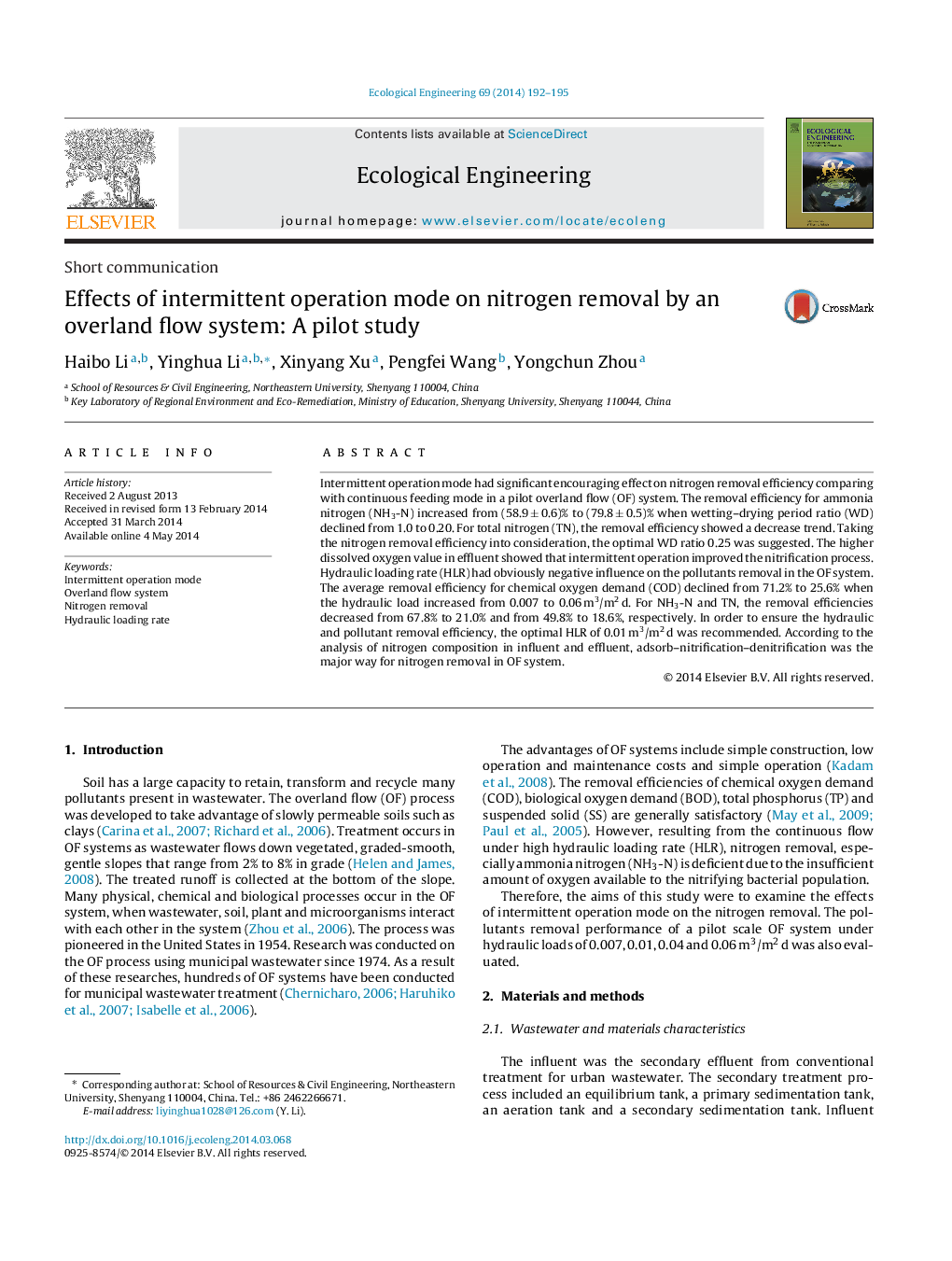| Article ID | Journal | Published Year | Pages | File Type |
|---|---|---|---|---|
| 4389390 | Ecological Engineering | 2014 | 4 Pages |
Abstract
Intermittent operation mode had significant encouraging effect on nitrogen removal efficiency comparing with continuous feeding mode in a pilot overland flow (OF) system. The removal efficiency for ammonia nitrogen (NH3-N) increased from (58.9 ± 0.6)% to (79.8 ± 0.5)% when wetting-drying period ratio (WD) declined from 1.0 to 0.20. For total nitrogen (TN), the removal efficiency showed a decrease trend. Taking the nitrogen removal efficiency into consideration, the optimal WD ratio 0.25 was suggested. The higher dissolved oxygen value in effluent showed that intermittent operation improved the nitrification process. Hydraulic loading rate (HLR) had obviously negative influence on the pollutants removal in the OF system. The average removal efficiency for chemical oxygen demand (COD) declined from 71.2% to 25.6% when the hydraulic load increased from 0.007 to 0.06 m3/m2 d. For NH3-N and TN, the removal efficiencies decreased from 67.8% to 21.0% and from 49.8% to 18.6%, respectively. In order to ensure the hydraulic and pollutant removal efficiency, the optimal HLR of 0.01 m3/m2 d was recommended. According to the analysis of nitrogen composition in influent and effluent, adsorb-nitrification-denitrification was the major way for nitrogen removal in OF system.
Related Topics
Life Sciences
Agricultural and Biological Sciences
Ecology, Evolution, Behavior and Systematics
Authors
Haibo Li, Yinghua Li, Xinyang Xu, Pengfei Wang, Yongchun Zhou,
